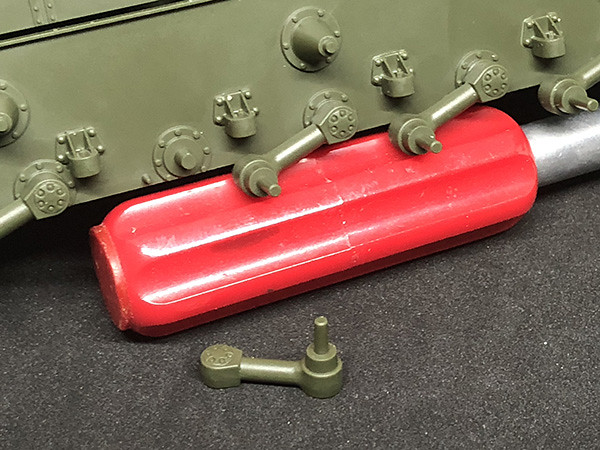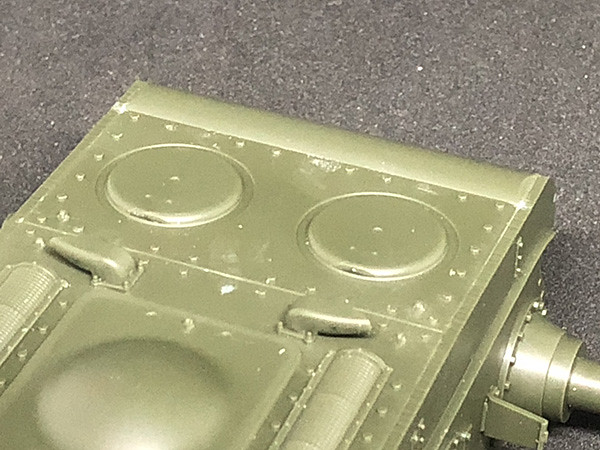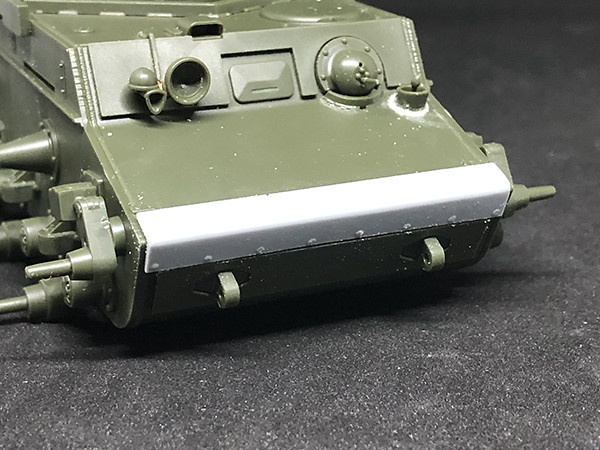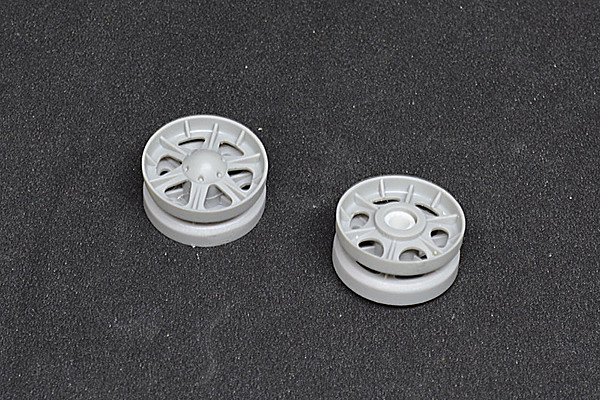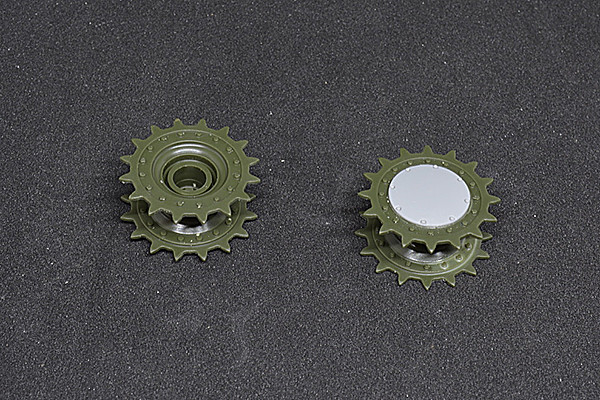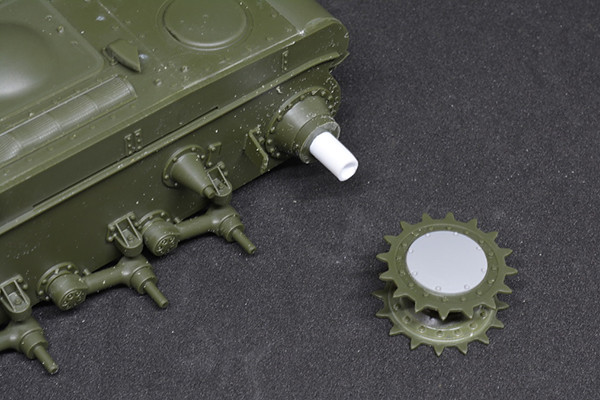The kit represents a KV-1 Model 1941 manufactured at ChTZ/ChKZ in Chelyabinsk in Oct/Nov 1941, so it's not exactly an 'early production' example as Tamiya claims on the box. It has a 75mm armored hull, early production 90mm armored turret and ZIS-5 gun.
I plan to build the vehicle depicted on the box art, which is from 1 battalion, 116th Tank Regiment in the winter of 1941/42 as shown in the photo below. This unit was formed in February 15, 1942 in the city of Mokshany in the Volga Military District.

The kit is comprised of 300 pieces on 10 sprues molded in dark green styrene, plus a further 2 pieces in clear styrene, a length of black twine for the tow cables and 8 poly caps to secure the gun trunnions, sprockets and idlers. 22 parts are unused.
Construction begins with the hull which, like most recent Tamiya kits, is comprised of multiple parts rather than the traditional one-piece hull tub.
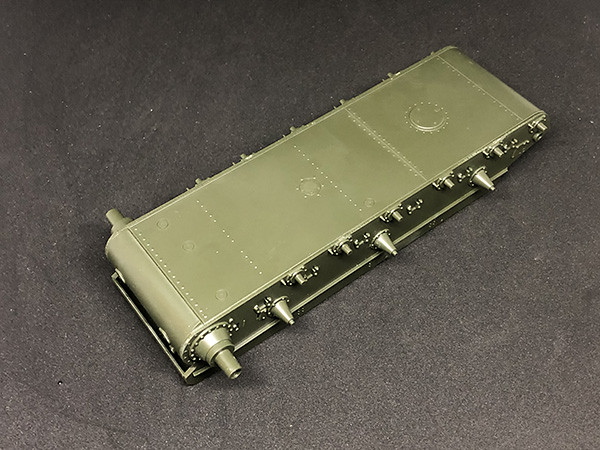
The parts include the weld beads between the hull top, sides and bottom. They do perhaps look a little too neat, but I'm not going to get too pedantic about that.
The instructions direct you to open up holes for the applique armor on the hull top, sides and driver's front plate, and to remove molded on weld marks where the rear towing brackets attach. This may be a hint that Tamiya intends to release earlier variants without the applique armor. Here's hoping.

Fit is excellent, as you would expect from a Tamiya kit.
The lifting eyes on the engine compartment and transmission compartment roof plates are molded in situ, and lack holes for the lifting rings. I carefully drilled them out with a #80 drill bit.

















